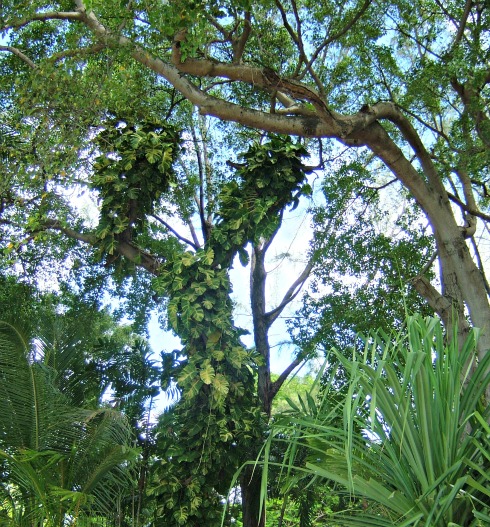
This LEED for Homes credit is a prerequisite, requiring that if any tropical wood is used, it must be FSC-Certified. Wood is considered tropical, in the LEED for Homes definition, if it is grown in a country that lies between the Tropics of Cancer and Capricorn. The purpose of this prerequisite is to discourage the use of tropical woods, because poor forestry practices have been destroying tropical rain forests, which causes irreversible harm to biological diversity and contributes to global climate change. If tropical wood is used, then, it needs to be certified by the Forest Stewardship Council (FSC), which is the seal of approval that the forest is sustainably managed.
Tropical wood tends to be uniquely beautiful and durable: mahogony, teak, and ipé are some of the common tropical woods used in homes all over the world. We chose not to use any tropical woods, because, well, why? In the scheme of choices that are good or bad for the environment, it is pretty easy to choose non-tropical wood. Oak, pine, fir, cherry, and walnut are all abundantly grown in North America, and each of these types of wood has its own unique beauty. (A good article about avoiding tropical wood in your home can be found at http://www.bestgreenhometips.com/2009/05/avoiding-tropical-wood-in-your-home.) Most of our interior wood cabinetry is fir veneer. It has a warm, orangey color and darkens over time. Using fir veneer over medium density fiberboard also reqiures much less of the fir tree than would cabinets made out of solid fir. We have no wood flooring because we have in-floor heat everywhere, and wood is not the best material to install on top of radiant hydronic heating. (My aunt and uncle had to rip out their wood floors several times because of issues with it over in-floor heating).
So, this was not a difficult prerequisite for us to meet, and it obviously did not cost us anything. (As a side note, when it comes to furnishing a house with tropical wood furniture, LEED has no comment.)
